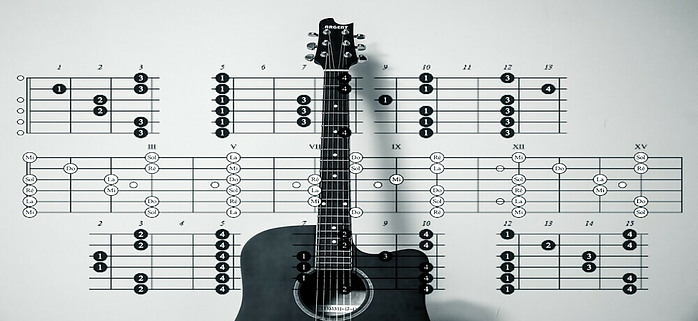
How to Play The Basic Guitar Chords for Beginners
Imagine stepping into a space where the language is melody, and the alphabet is chords. That’s the musical universe you enter when you pick up a guitar. You’re about to find out how to play the basic guitar chords for beginners. It all starts with open chords.
What are open chords, you might wonder? Simply put, they are chord formations that utilize open strings. These are played without your fingers pressing down on any frets. Think of them as the primary colours from which you can mix and paint a vast array of songs. They’re not just the ABCs of guitar playing; they’re the essential tools that will allow you to express yourself through music.
Table of Contents
Mastering Major Open Chords: Shapes and Sounds
How to Read the Diagram
Visualize the chord diagram as a map of your guitar’s neck as seen from above, with the fretboard facing you. The horizontal lines represent frets while the vertical ones stand for strings. In this visual guide, solid dots will show you where to place your fingertips.
Solid dots represent finger positions. Diamonds represent played notes. X represents a string or note not played (muted).
C Major
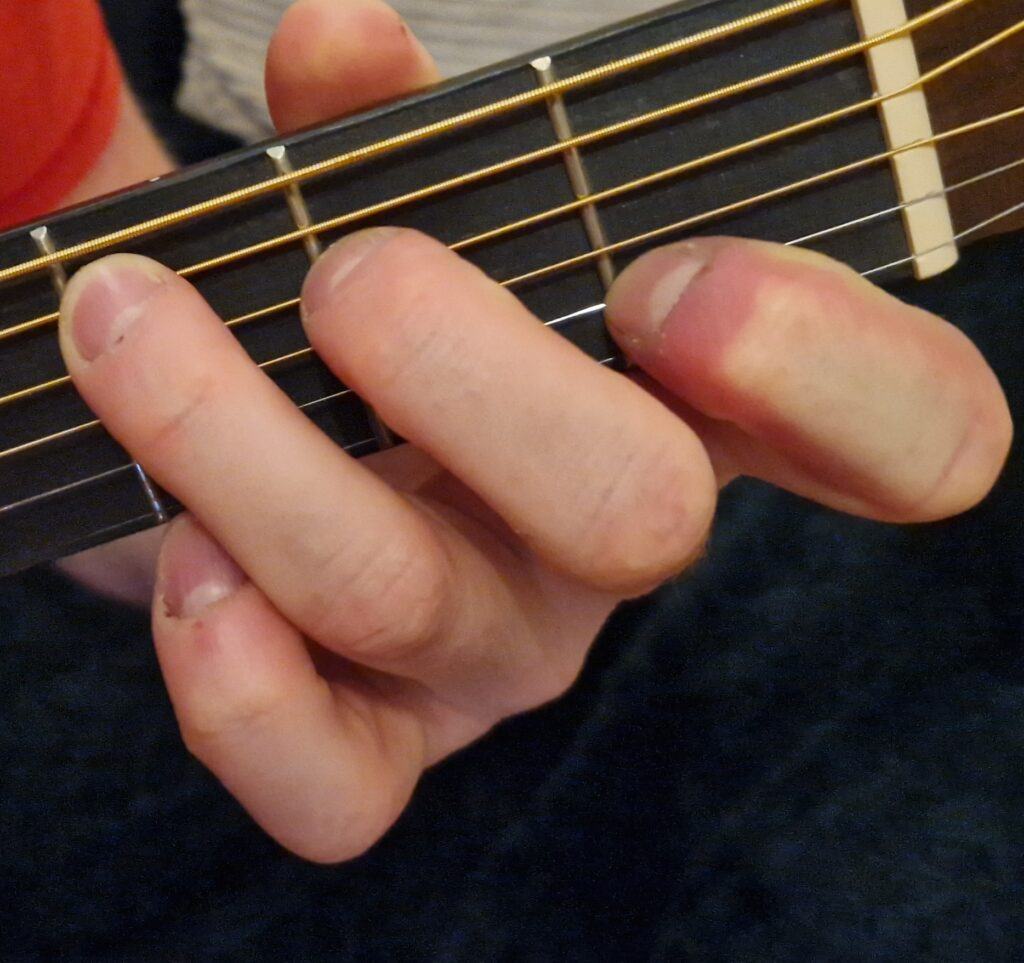
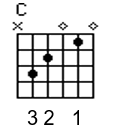
Getting to grips with major open chords is a pivotal step in any guitarist’s journey. Starting with the C Major chord, you’ll find that it’s all about finger placement. My ring finger goes on the third fret of the A string, while the rest of the strings create that unmistakable bright and cheery tone when I strum from the A string down.
G Major
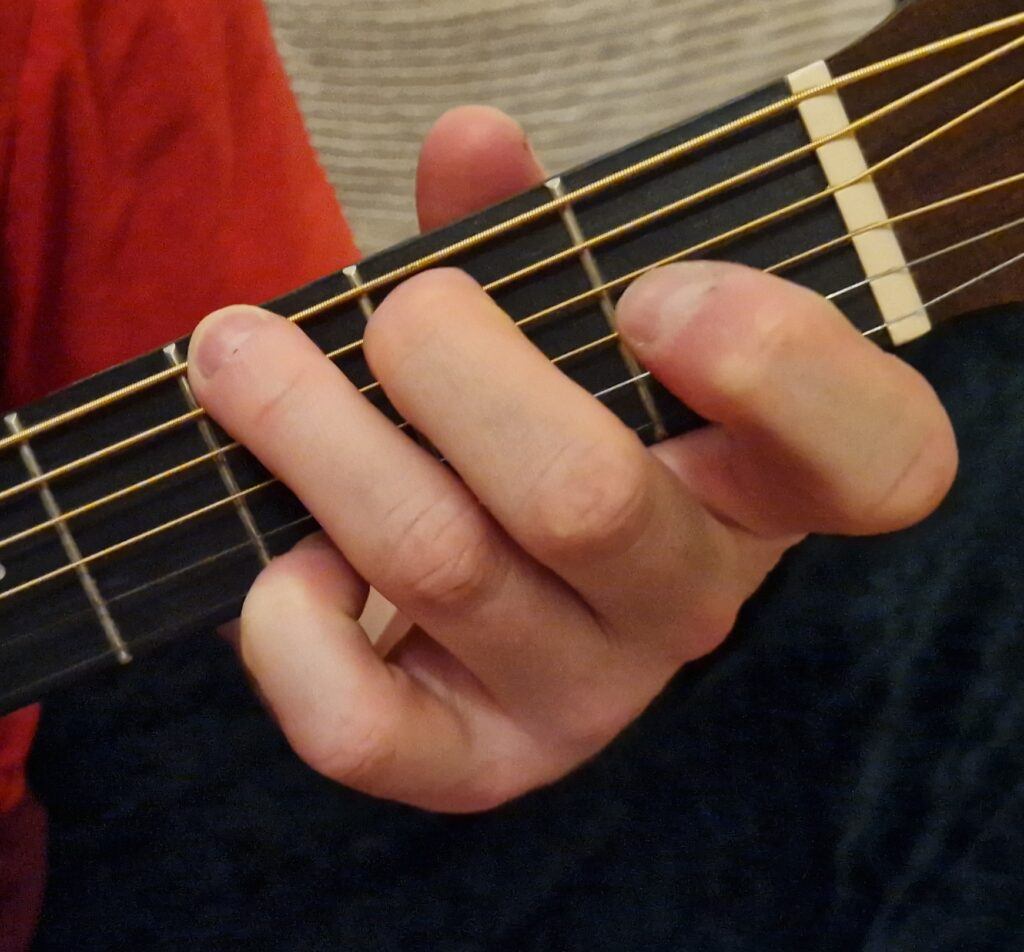
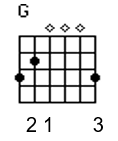
Next, I move on to the G Major chord, and here’s a fun fact: due to its upbeat and full-bodied nature, it’s a go-to for many guitarists. To play it, I anchor my ring finger firmly on the third fret of the low E string, making sure to hit all the strings down to the high E where the pinky finger is placed. The result? A sounds so lively, it’s no wonder it’s a staple in many genres.
D Major


The D Major chord is a personal favorite – it has this warm, inviting resonance that’s just hard to miss. It takes a bit of coordination: my index finger on the second fret of the G string, middle finger on the high E’s second fret, and ring finger on the third fret of the B string.
A Major
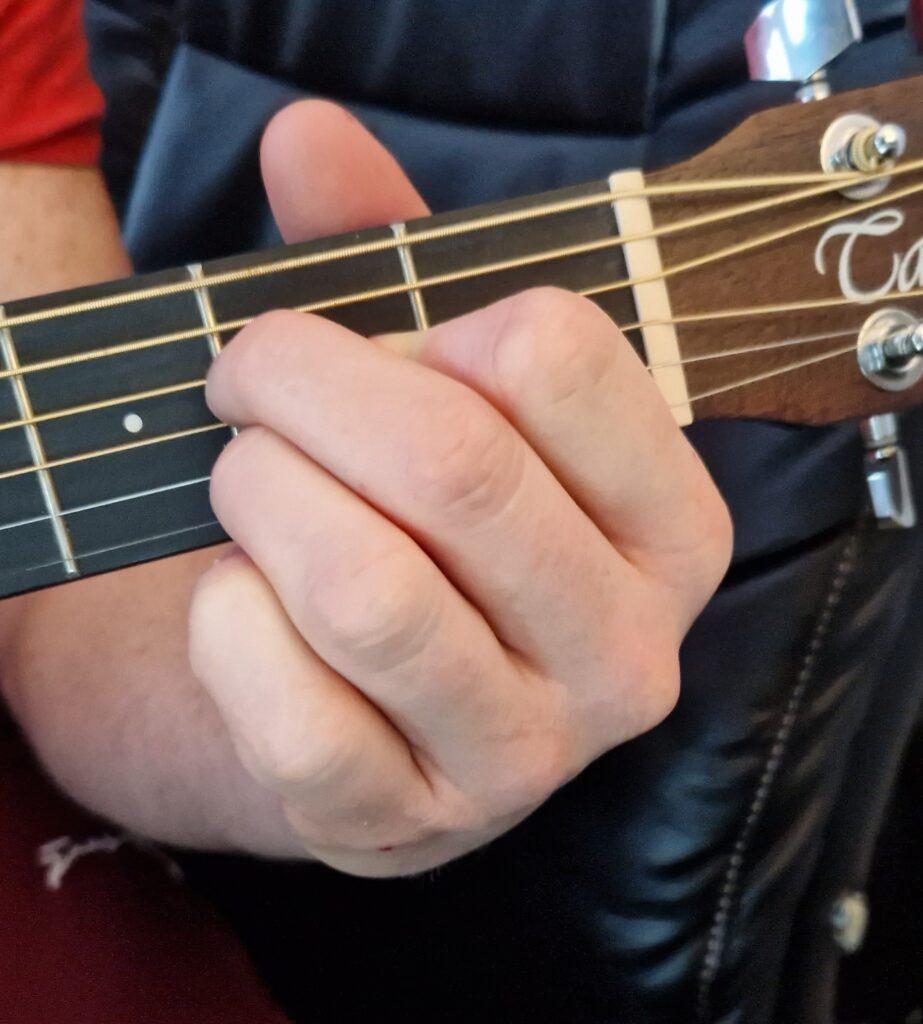

A Major’s role is fundamental in the chord family, offering a bright and uplifting sound that’s as easy to play as it is pleasant. By positioning my index, middle, and ring fingers on the second fret of the D, G, and B strings, and strumming from the A string, I can create melodious harmonies suited for an array of tunes.
Another way to play this chord would be to barre your index finger across the D, G & B strings on the second fret. This way can be easier sometimes depending on personal preference and also the chord progression of specific songs.
E Major


E Major is all about power and resonance. It’s a chord that provides a solid foundation with my fingers occupying the first fret of the G string, and the second frets of both the A and D strings.
F Major
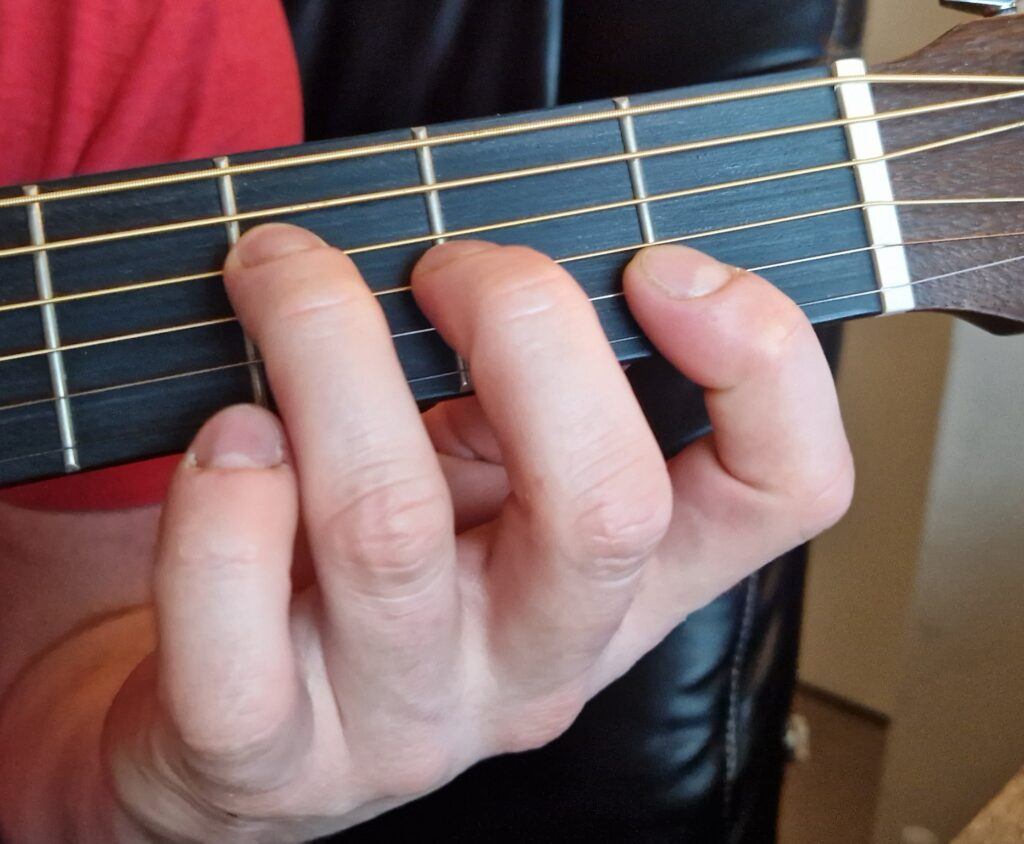
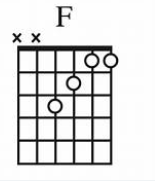
F Major might introduce a bit of complexity with its introduction to barre chords, but it’s an essential skill for any serious guitarist. For this chord, I bar the first fret and plant my ring finger on the third fret of the D string and my middle finger on the second fret of the G string. Although this chord requires strumming from the A string down and avoiding the low E, it’s a pivotal moment when moving from beginner to intermediate playing.
Diving into Minor Open Chords
Minor chords have a special place in music, providing a counterbalance to the brightness of their major counterparts. They bring depth to musical narratives and are essential for expressing a wide range of emotions. Let’s explore some of the most common minor open chords.
A Minior


The A Minor chord (Am) is a frequent choice for songwriters. To play this chord, place your middle finger on the second fret of the D string ring finger on the second fret of the G string and your index finger on the first fret of the B string. Strumming from the A string down. Its versatility makes it suitable for numerous musical styles, and you’ll find it in everything from ballads to rock anthems.
E Minor
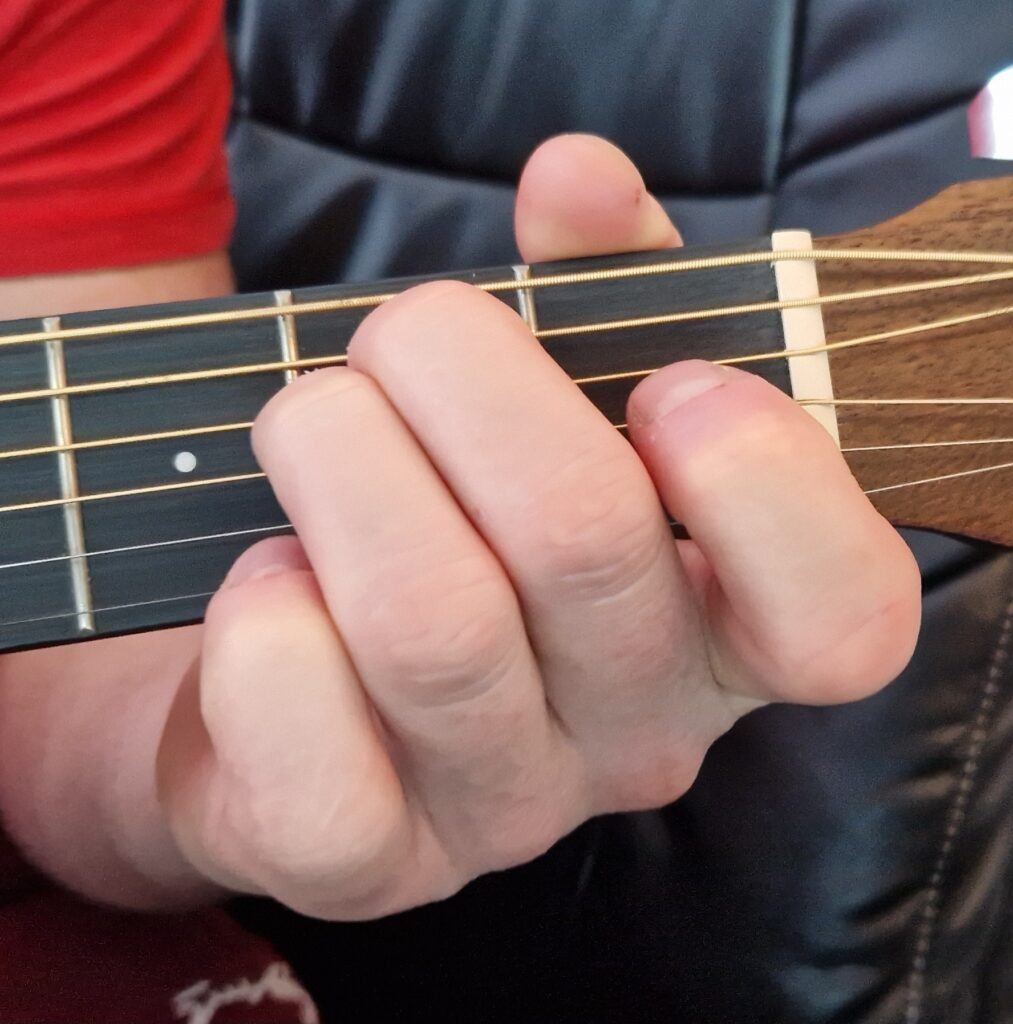

For a chord that’s as easy to play as it is evocative, look no further than E Minor (Em). This chord requires just two fingers: middle on the second fret of the A string and ring on the second fret of the D string. The result is a soft and emotive sound that carries a subtle and profound depth, widely used across genres.
D Minor
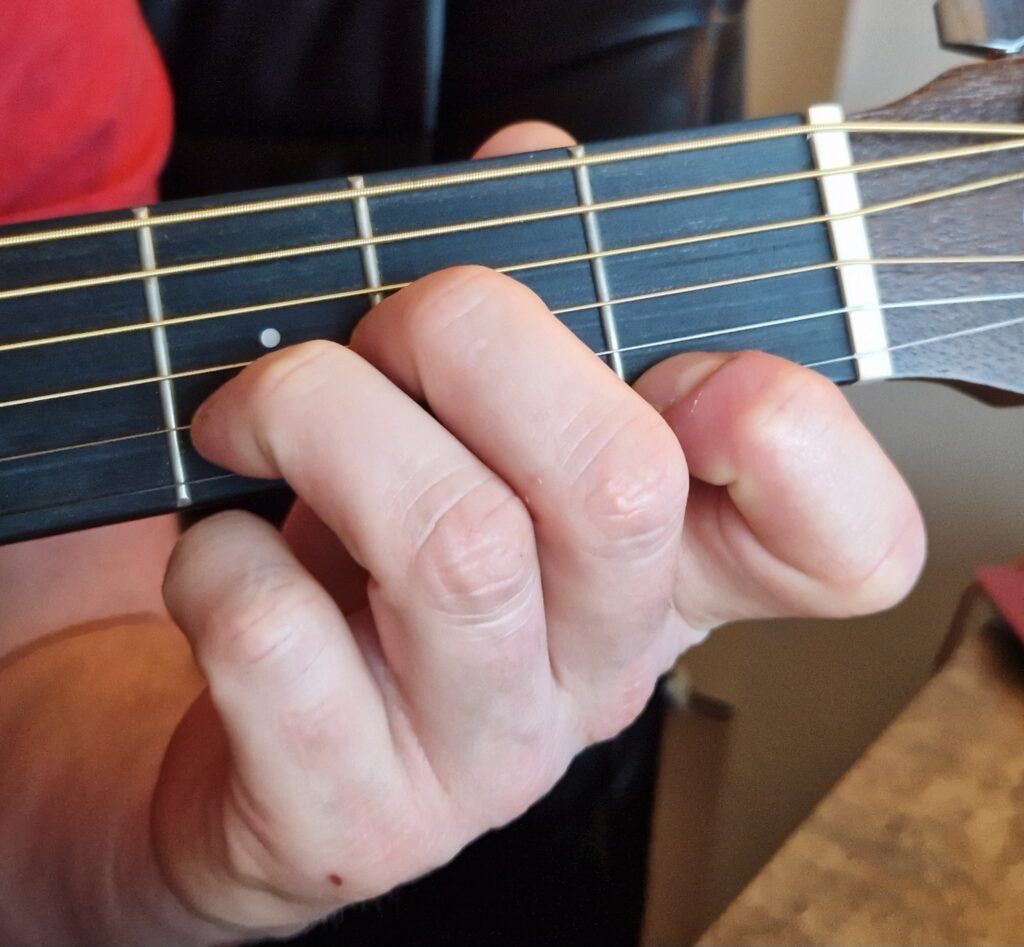
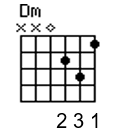
When the narrative of a song calls for heightened drama or sorrow, the D Minor chord (Dm) steps into the spotlight. By placing your index finger on the first fret of the high E string, you create a chord that has been the cornerstone of many poignant moments in music history.
Mastering the difficult chords
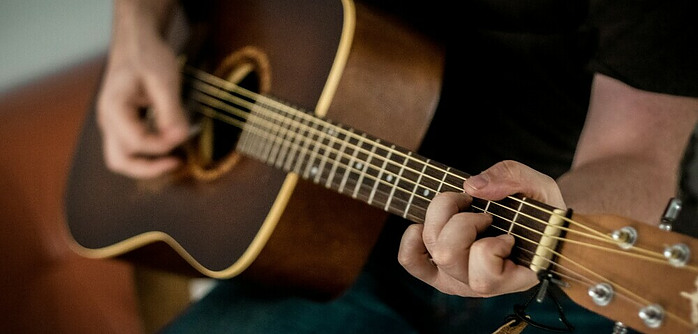
Reflecting on our journey, we’ve dived into 9 fundamental open chords, laying a solid foundation for your musical exploration. As you immerse yourself in crafting these chord shapes, you’ll experience varying levels of ease in their formation.
Honestly, mastering the open chords unfolded effortlessly for me. However, the journey to conquer the F barre chord spanned more time than I would like to admit, yet determination and deliberate practice yielded gratifying results. Initiating your guitar venture with these open chords proves to be one of the most valuable time investments for your guitar practice.
While some chords have alternatives in the way they are played, I’ve presented them in their authentic form, steering away from simplified versions. Your musical journey is crafted to be transparent, enjoyable, and most importantly, authentic.
Practice Techniques and Tips for Open Chords

You’ve explored the gentle melancholy of minor chords and the buoyant cheer of major chords. You’re equipped with the shapes and sounds that form the heartbeats of countless songs. So, what comes next?
The mastery of any skill, especially one as nuanced as guitar playing, rests on consistent practice. Here are some targeted techniques and practical tips to make these open chords resonate with clarity and expression in your music.
Strumming
Start with strumming exercises. These not only help in mastering the rhythmic flow of music but also ensure smooth transitions between chords. For example, practice swapping between G Major and C Major or Am and Em with a metronome set to 50-60bpm to start off with to build tempo consistency.
Focus on producing clean sounds. This might sound simple, but it’s a cornerstone of good guitar playing. Press the strings firmly, and make sure each note within the chord can be heard distinctly. If any string buzzes or doesn’t ring out, reassess your finger placement.
First Songs
Experiment with different musical styles. Open chords are the backbone of various genres — from folk to rock to blues. Try playing a country tune with the bright strum of A Major, or add depth to a blues progression with the emotive strains of Dm.
Remember, from practice comes confidence, and with confidence, performance becomes second nature. Incorporate open chords into your songs, play along with your favorite tracks, or jam with friends to see how these chords work in a live context.
Take your Time
Patience and persistence are your allies here. As you navigate through the learning curve, the stretch of your fingers will improve, and muscle memory will take over, making it easier for you to invoke these chords without a second thought. Remember that some chords will come so much easier than others, so don’t get too down if you struggle with any particular chord, we all do trust me.
Playing Methods
Up your game by learning different strum patterns, adding in fingerpicking techniques, or playing chord variations. These skills will give you the freedom to express yourself more dynamically and create music that genuinely resonates with your personal style.
And lastly, enjoy the process. Music is a journey, not a destination. Each open chord is like a new friend with its own personality, and as you get to know them, you’ll uncover the joy of creating harmonies that are uniquely yours. Keep strumming, and let the music flow!
Daily Guitar Practice Made Easy, Practical Tips For Beginners
Conclusion
Persistence is key. Those chords that challenge you today will become the ones you execute effortlessly tomorrow, as long as you continue to practice regularly and with intention.
The open chords you’ve learned are just the beginning. They are the keys that unlock the vast territories of guitar playing—territories filled with songs to discover and melodies to create. As you move forward, let each chord be a step toward greater confidence and joy in your music. Happy playing.
How To Choose Your First Acoustic Guitar
martin@chordexplorer.com





